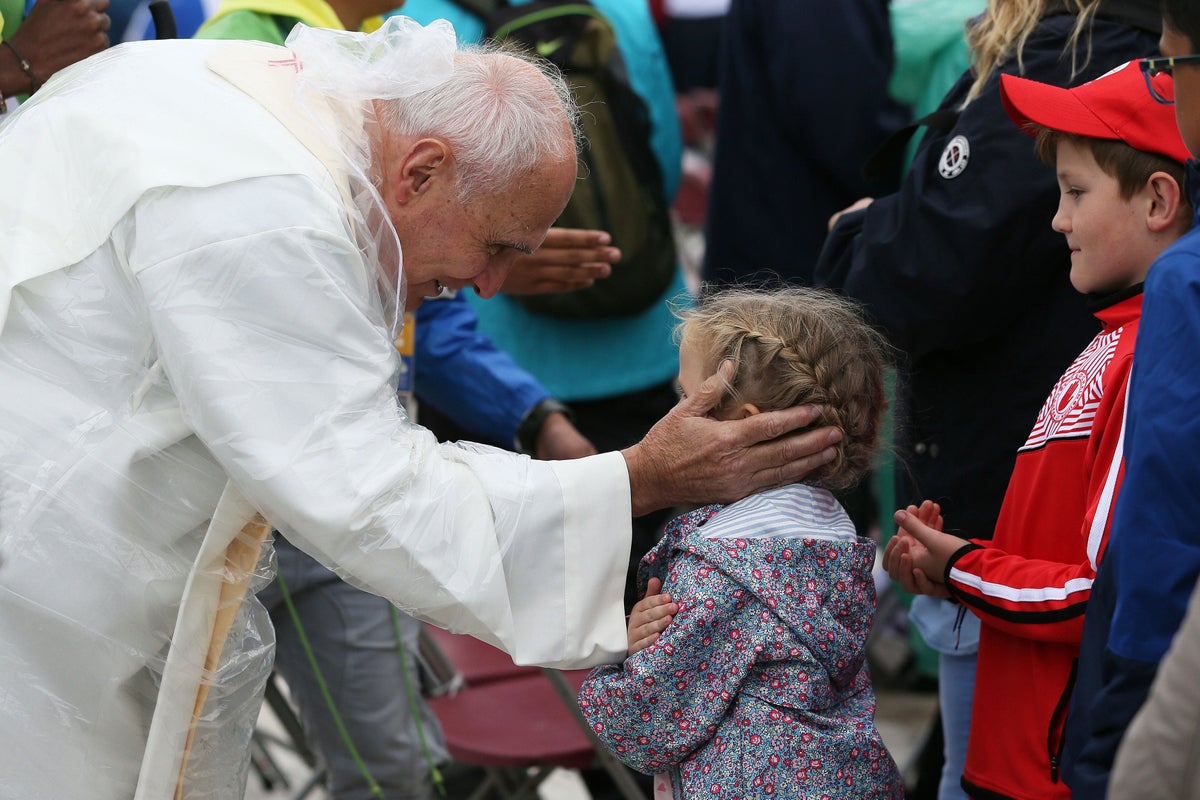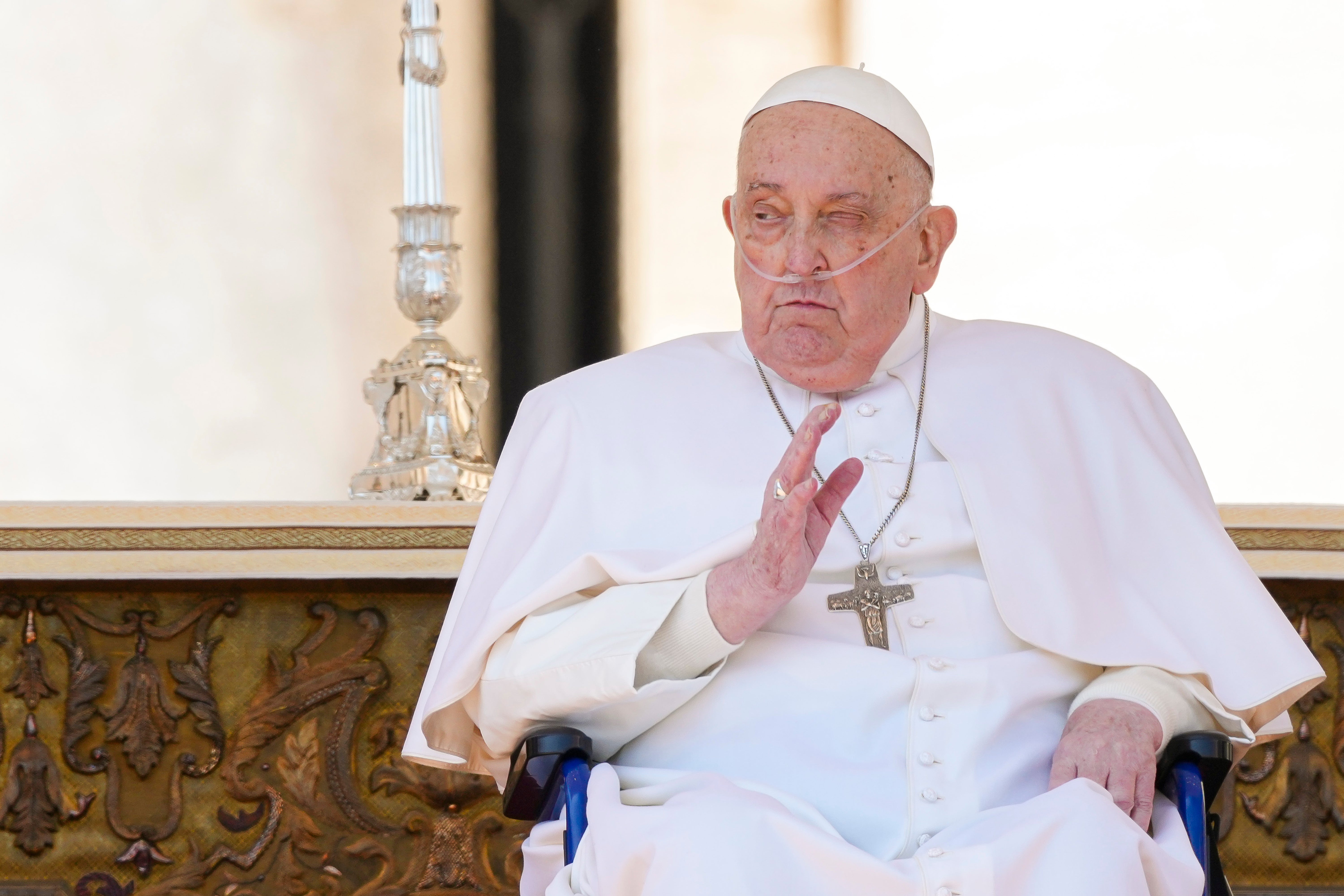
Pope Francis was asked by the leader of the Catholic Church in Ireland to visit Northern Ireland as part of his historic 2018 trip to Ireland.
The Archbishop of Armagh, Eamon Martin, said he travelled to Rome to ask if Francis would travel north of the border “to affirm the peace process”.
But he said it became clear that it would be a 36-hour visit to Dublin, apart from a quick trip to Co Mayo.

The primate of Ireland also said that the pope’s words of repentance for clerical abuse scandals during the 2018 visit “were worth so much” and that his promotion of empathy towards migrants will be one of his strongest legacies.
The pontiff visited Ireland for two days in August 2018, which included a visit to Knock, a meeting with victims of clerical abuse, and a visit to a homeless centre run by the Capuchin Fathers.
The visit culminated in an open-air Sunday Mass in Dublin’s Phoenix Park, where pilgrims’ attendance was a fraction of the million people who greeted Pope John Paul II at the same spot in 1979.
The legacy of church abuse cast a long shadow over the pope’s Irish visit, during which he addressed a number of crimes by its institutions and members.
Speaking to the PA news agency, Archbishop Martin said that his address to the victims of clerical abuse and mistreatment during the Phoenix Park event were worth a lot.
“I think the actual words that the pope spoke, particularly whenever he expressed those very, very, sincere apologies and repentance to victims and survivors of abuse, I think, really, they were worth so much.”
Much was made of the attendance numbers during that visit as it was observed that they were significantly down on Pope John Paul II’s visit.
“Most of us expected that this would be something much smaller, not least because the world has changed,” the archbishop said.
“People use mobile phones now, they tune into things online, they tend not to go to big, big, massive gatherings.
“A lot of people watched it on TV, they tuned in on their radios or on their mobile phones, and only a much smaller crowd arrived in the Phoenix Park that afternoon.
“So I will say I was probably thinking, ‘Oh this is going to be disappointing’, however, we’re told that it was actually one of the biggest gatherings of people in Europe that year, and so it was still a big gathering of people.”
The archbishop said that as soon as it was announced that the pope would attend the World Meeting of Families in Dublin, a religious event held every three years in a different location, “there was a lot of excitement”.
“We wanted to plan for it, and everybody wanted the pope to visit them.
“I remember at the time asking if Pope Francis could come to Northern Ireland, just to affirm the peace process and also because when Pope John Paul II came to Ireland back in 1979 he intended to come north and to come here to Armagh, but unfortunately, he couldn’t because of the violence, so he held that meeting instead south of the border in Drogheda.
“So I actually went over to Rome to try to petition Pope Francis to come to the north, but by then it was clear he was only coming to the World Meeting of Families.
“It was going to be a very short visit of 36 hours, roughly, to Ireland and the only thing he was going to do different was he was going to go over to Knock for a short period of prayer and come straight back to Dublin.”

He said that the Argentinian-born Jesuit spent a sabbatical in Dublin in 1980 to learn English and asked him regularly about the peace process.
“Whenever I would meet him, he would always ask me about Ireland, ‘the green country’ he would say, and then he would like to know how things were going, particularly in terms of the peace process.
“He had clearly a big interest in peace and also in the progress of our peace.”
He said one of Francis’ strongest legacies during his papacy would be his call for empathy towards migrants and refugees.
“We have to remember Pope Francis himself was a descendant of migrants from Italy to Argentina, and it’s clear, even in his own autobiography which he produced called Hope, it’s clear that he was so motivated by that story of his grandparents and how they came over from Italy.
“It’s interesting that one of the very first things he did as pope is he went to the island of Lampedusa, a small island which had been overwhelmed by a huge number of people trying to find solace, trying to find asylum, and trying to make their way to a better world.
“He exposed for the entire world the reality and indeed the scandal of the displacement of people in the world, in many cases due to war, and how these people were not finding a welcome, how so many of them were dying, how so many of them were victims of the exploitation of human trafficking.
“The plight of migrants he would have seen as the modern day marginalised, those on the peripheries who people didn’t want, they didn’t want to welcome them.
“Some of his strongest statements have been very challenging for all of us – about the need to promote help for these people, the need to integrate people who are migrants, and I think that that has been troubling for a lot of us, because people tend to say, ‘well that’s fine, but we need we have services that will look after ourselves’.
“That has been a big issue in Ireland, both north and south.”
Who could be the next Pope? The cardinals who might succeed Francis
Pope Francis dies aged 88 after double pneumonia battle
A timeline of the life of Pope Francis: From Buenos Aires to Rome
Pope Francis dies aged 88, Vatican announces
Nun praises pope’s roles for women but hopes successor can make more progress
Pope had a common touch, says Vatican expert who shared football joke with him







